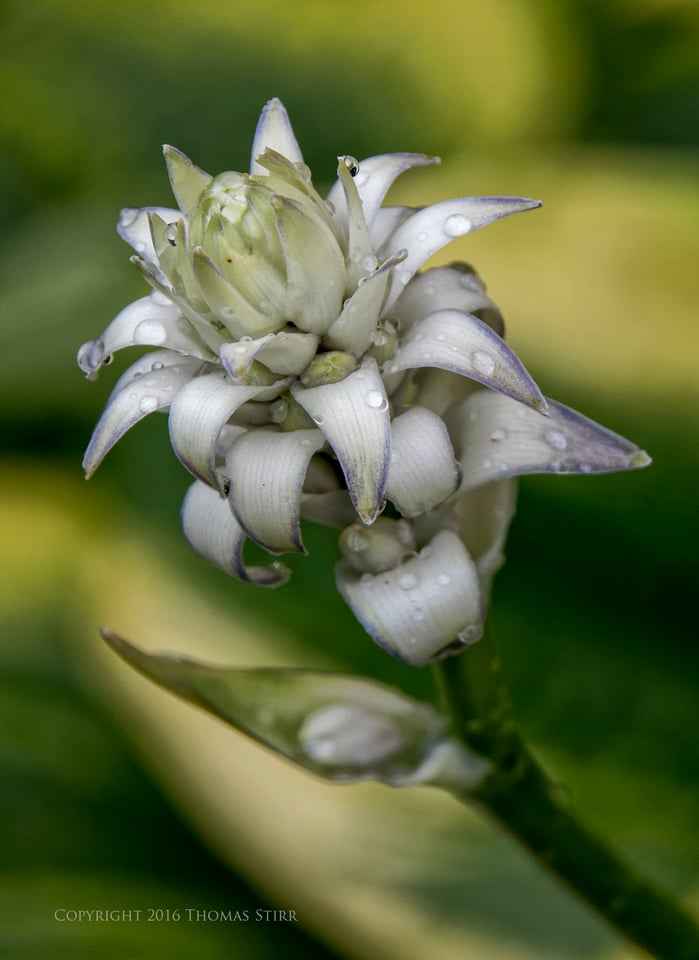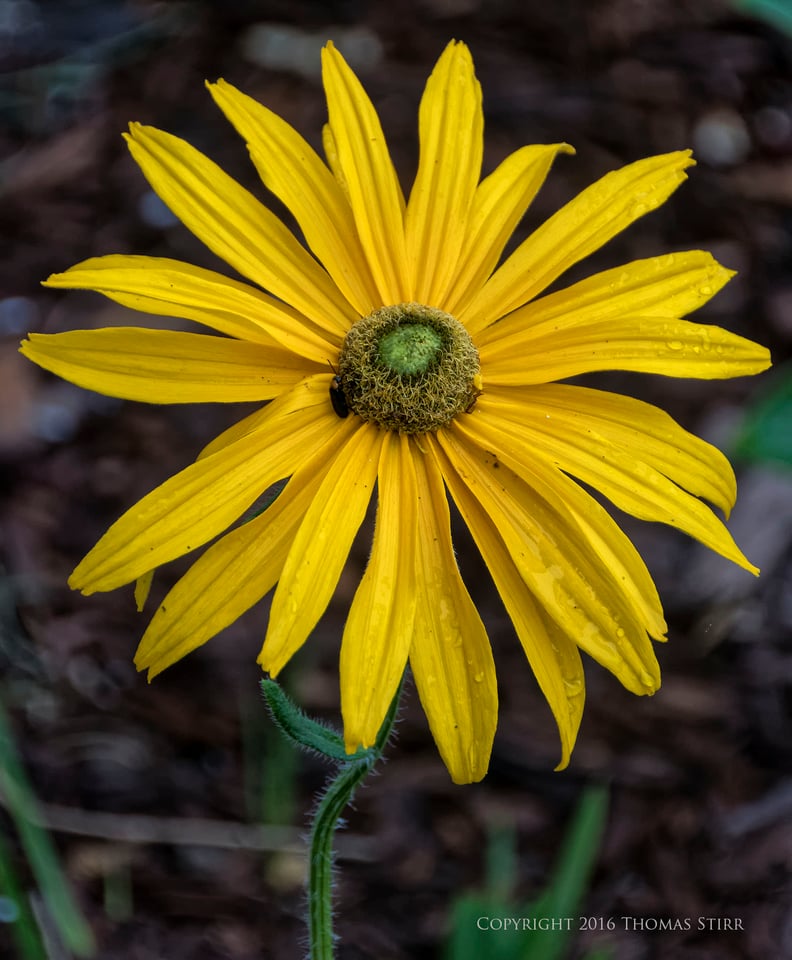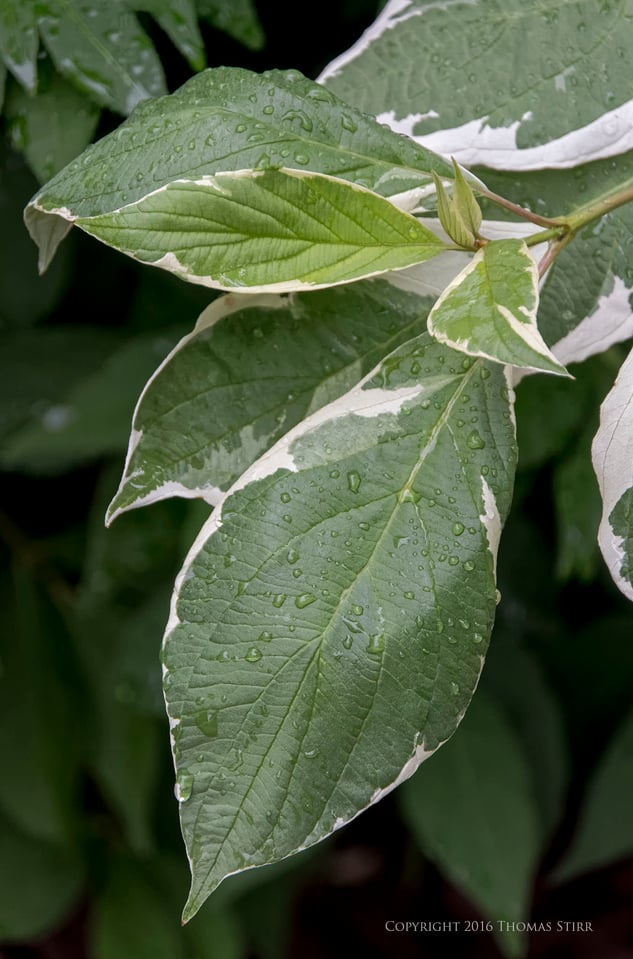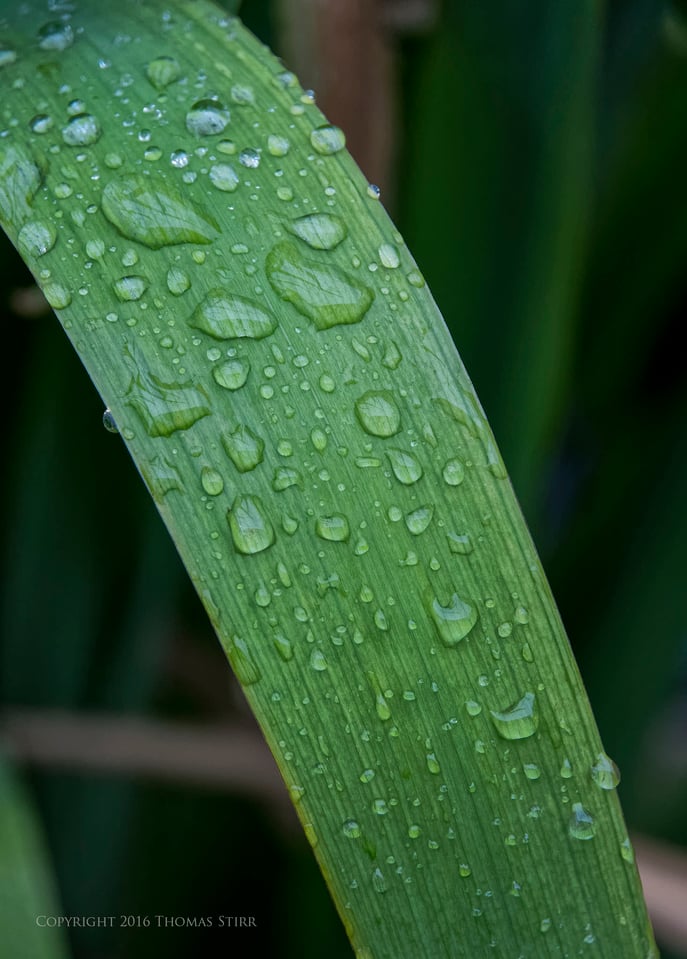One of my favourite times to photograph garden plants and flowers is first thing in the morning after a fresh rain. All of the colours and textures seem richer after the rain dapples them with water droplets.

Even the smallest and simplest of flowers take on a new look as they wear rain drops like small jewels.

The overcast conditions allow the flowers to proudly display their rich colours.

It always fascinates me to observe where the rain drops congregate, sometimes seeming to defy gravity by stopping on the slope of a leaf or petal.

I like how many plants take on a freshly scrubbed look, glistening even when the sun is still hidden behind clouds.

Some flowers take on more delicate shapes and details after a morning rain.

My eye is always attracted to angles and I enjoy finding them when framing a plant image, and using them as corner exits.

I set up both of my Nikon 1 J5s when I went out to capture these images this morning. One was fitted with the 1 Nikon 10-100mm f/4-5.6 zoom lens, the other with the 1 Nikon 30-110mm f/3.8-5.6 zoom along with a 21mm MOVO extension tube.

I captured the image above and the one that follows with the help of the 21mm MOVO extension tube.

I also used this combination to photograph the bud in the next image.

I often look for image opportunities with the leaves of plants, finding cascading water droplets especially appealing.

Sometimes using an extension tube with a larger flower can yield an interesting combination of petal twists and curls.

I also enjoy highlighting water droplets on leaves by creating very simple compositions that also have a feeling of flow to them.

A very special treasure is finding an intricate flower dappled with a multitude of water droplets.

The best thing about photographing ‘after the rain’ is that all many of us have to do is simply go out outside in our own yards.
Technical Note:
All images were captured hand-held with a Nikon 1 J5 and either a 1 Nikon 10-100mm f/4-5.6 zoom lens, or a 1 Nikon 30-110mm f/3.8-5.6 with a 21mm MOVO extension tube. All images in this article were processed from RAW files using my standard process of OpticsPro 11, CS6 and Nik.
Article and all images are Copyright 2016 Thomas Stirr. All rights reserved. No use, adaption, or reproduction of any kind is allowed without written consent. Photography Life is the only approved user of this article. If you see it reproduced anywhere else it is an unauthorized and illegal use.
Love your work! I am a new photographer at 61 and I also take all of my macro pics hand-held. Beautiful! Thank you for sharing your experiences so that us that are new to the field can utilize and appreciate quality insight.
Hi Lorena,
Thank you for your comment – much appreciated! I’m glad the article was of benefit for you!
Tom
Magnificent pictures Thomas. Flowers and rain drops always combine well and make inspirational photos. I would like o invite you o India and particularly Lavasa where I work. We get 200 inches to 400 inches rainfall all in 4 months from June to September. You can see he photo spot on PL. Me too enjoy snapping droplets. Great article great pictures.
I’m glad you enjoyed them Anubandh! 200-400 inches of rain in 4 months! Hmmm…I had better bring a mask and snorkel if I ever visit.
Tom
it is incredible what you do with a tiny sensor. my compliments!
Tiny – you mean a size, not a price? :))
Hi Vladimir,
The J5 has a 1″ CX sized sensor. In Canada the J5 with a 10-30mm f/3.5-5.6 PD zoom lens retails for about $550.
Tom
Thanks Tom, I pretty know prices for Nikon gears :)
“Tiny sensor” is only tiny size, not a price.
Anyway, photo doing by photographer, not a camera. Camera register light only.
Thanks gianpaolo…I appreciate the positive comment!
Tom
Very nice Thomas. Too bad that the longer Nikon 1 teles don’t resolve quite as well, or I would be trying a Nikon 1 for BIF. I am presently using the OMD EM1 with the Zuiko 300 which work great for stationary birds and bigger BIF, but not for faster birds like terns and swallows in flight.
Hi Bengt,
We all need to choose the best camera gear for our needs, so if the OMD EM1 with the Zuiko 300 is working well for you then I say ‘stick with it’!
Tom
Do you feel that the autofocus on the Nikon 1 is fast enought for small and fast BIF, like terns and swallows.
Hi Bengt,
I don’t have any problems photographing terns with my Nikon 1 V2s. I have not had any real success with swallows unless they are near nesting boxes or nests. If free-flying erratically as swallows do, I have not had any consistent success capturing them with Nikon 1 gear. Here are a couple of links:
tomstirrphotography.com/terns-hovering
tomstirrphotography.com/swallows-flight
Tom
Thanks Thomas,
My experience as well. I will let you know if the EM1 offers any major improvement in AF speed.
Thank You.
Hi Bengt,
I just published a new article on my blog featuring swallows (Purple Martin) in flight. I captured the images with my Nikon 1 V2 and CX 70-300mm zoom. Pretty aggressive crops but here’s a link: tomstirrphotography.com/purpl…tin-flight
Tom
Excellent. Thank you Thomas.
Searching for the ultimate tool for portable BIF I am concluding that of the Nikon 1 and the Olympus OM-D, the Nikon offers the faster AF. This is supported by your results as well as by Nikon’s own claim that the Series 1 is developed to offer the fastest possible mirrorless AF.
At the same time I conclude based on image quality, that the OM-D with the Zuiko 300 mm prime offers a superior image, if you are lucky enough to catch it despite the quite slow but accurate OM-D autofocus.
I do wish that Nikon offered a high quality 300 mm prime for the Nikon 1,
Olympus has announced that the new and coming E-M1 (mark II?) is being developed primerely for sports photography and will be offering a substantially improved AF.
If you are a photographer, there are no dull moments.
Hi Bengt,
I’m glad the recent posting was of assistance to you! Unfortunately my Nikon 1 V2s have Aptina sensors in them, so while the AF is quite good, dynamic range and colour depth is challenged.
Tom
Yes, both contenders in the Portable BIF class are presently using “second rate” image sensors. However, I understand that we can expect to see changes to this for both Nikon 1 and Olympus OMD before this year is out.
Good times ahead.
Let’s hope you’re right, Bengt!
You can use a loupe on the J5 and get much better BIF results, but it is a clumsy method, all the same!
What a beautiful series of images this is!
Thanks Lisa – glad you enjoyed them!
Tom
Thomas, I really liked the first and second last images in you series, but the rest, gee not sure, did you use a tripod? If just hand held no worries, I can understand… I do like your work, just curious…
Hi Philip,
Your feedback is always appreciated! As is the case with virtually all of the images I use in my articles the selection in this article were all done hand-held. As is often said, “you can’t please all of the people all of the time”…that’s just a part of life.
Tom
I love the greenery Thomas, thanks so much for sharing. I, on the other hand watched, a couple of days back, as an icebreaker finally cleared a channel, for the first ship of the season to arrive. A sure sign of summer around here!
Thanks Ronald! Every location has its harbingers of change…and your’s is quite unique!
Tom
Beautifully done, Thomas!! Tweeted!!
Thanks Lois!
Tom
Thomas, we are proving again and again that a cropped sensor can render unbelievable results! Amazing! Thank you!
Thanks for the supportive comment Jules!
Tom
Nice shots Thomas. Love water drops too :)
Thanks Vladimir!
Tom